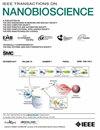基于特征融合注意力网络模型的多期脑CTA侧支循环的自动评价。
IF 3.7
4区 生物学
Q1 BIOCHEMICAL RESEARCH METHODS
引用次数: 0
摘要
脑卒中是致残和死亡的主要原因之一,可分为出血性脑卒中和缺血性脑卒中。缺血性中风更为常见,大约每10名中风患者中就有8人患有缺血性中风。在临床实践中,医生通过使用计算机断层造影(CTA)图像来准确评估中风患者的侧支循环来诊断中风。这些影像学信息对于帮助医生确定患者的治疗计划和预后具有重要意义。目前,利用人工智能在医学计算机辅助诊断技术领域取得了很大进展。然而,在基于深度学习算法的相关研究中,研究人员通常只使用单相数据进行训练,缺乏多相图像数据的时间维度信息。这使得模型难以学习更全面、更有效的侧支循环特征表示,从而限制了其性能。因此,结合数据进行训练有望提高侧支循环评估的准确性和可靠性。在这项研究中,我们提出了一种有效的混合机制来帮助特征编码网络评估大脑中侧支循环的程度。通过使用混合注意力机制,提供了额外的指导和正则化,以增强跨多个阶段的侧支循环特征表示。将时间维度信息添加到输入中,并在多分支网络中设计多个特征级融合模块。单级特征提取网络中的第一个融合模块完成了单分支网络中深浅血管特征的融合,其次是多级网络特征融合模块,实现了四个阶段的特征融合。在多期颅骨CTA图像数据集上测试,准确率超过90.43%。实验结果表明,添加这些模块可以充分挖掘侧支血管特征,提高特征表达能力,优化深度学习网络模型的性能。本文章由计算机程序翻译,如有差异,请以英文原文为准。
Automatic Evaluating of Multi-Phase Cranial CTA Collateral Circulation Based on Feature Fusion Attention Network Model
Stroke is one of the main causes of disability and death, and it can be divided into hemorrhagic stroke and ischemic stroke. Ischemic stroke is more common, and about 8 out of 10 stroke patients suffer from ischemic stroke. In clinical practice, doctors diagnose stroke by using computed tomography angiography (CTA) image to accurately evaluate the collateral circulation in stroke patients. This imaging information is of great significance in assisting doctors to determine the patient’s treatment plan and prognosis. Currently, great progress has been made in the field of computer-aided diagnosis technology in medicine by using artificial intelligence. However, in related research based on deep learning algorithms, researchers usually only use single-phase data for training, lacking the temporal dimension information of multi-phase image data. This makes it difficult for the model to learn more comprehensive and effective collateral circulation feature representation, thereby limiting its performance. Therefore, combining data for training is expected to improve the accuracy and reliability of collateral circulation evaluation. In this study, we propose an effective hybrid mechanism to assist the feature encoding network in evaluating the degree of collateral circulation in the brain. By using a hybrid attention mechanism, additional guidance and regularization are provided to enhance the collateral circulation feature representation across multiple stages. Time dimension information is added to the input, and multiple feature-level fusion modules are designed in the multi-branch network. The first fusion module in the single-stage feature extraction network completes the fusion of deep and shallow vessel features in the single-branch network, followed by the multi-stage network feature fusion module, which achieves feature fusion for four stages. Tested on a dataset of multi-phase cranial CTA images, the accuracy rate exceeding 90.43%. The experimental results demonstrate that the addition of these modules can fully explore collateral vessel features, improve feature expression capabilities, and optimize the performance of deep learning network model.
求助全文
通过发布文献求助,成功后即可免费获取论文全文。
去求助
来源期刊

IEEE Transactions on NanoBioscience
工程技术-纳米科技
CiteScore
7.00
自引率
5.10%
发文量
197
审稿时长
>12 weeks
期刊介绍:
The IEEE Transactions on NanoBioscience reports on original, innovative and interdisciplinary work on all aspects of molecular systems, cellular systems, and tissues (including molecular electronics). Topics covered in the journal focus on a broad spectrum of aspects, both on foundations and on applications. Specifically, methods and techniques, experimental aspects, design and implementation, instrumentation and laboratory equipment, clinical aspects, hardware and software data acquisition and analysis and computer based modelling are covered (based on traditional or high performance computing - parallel computers or computer networks).
 求助内容:
求助内容: 应助结果提醒方式:
应助结果提醒方式:


